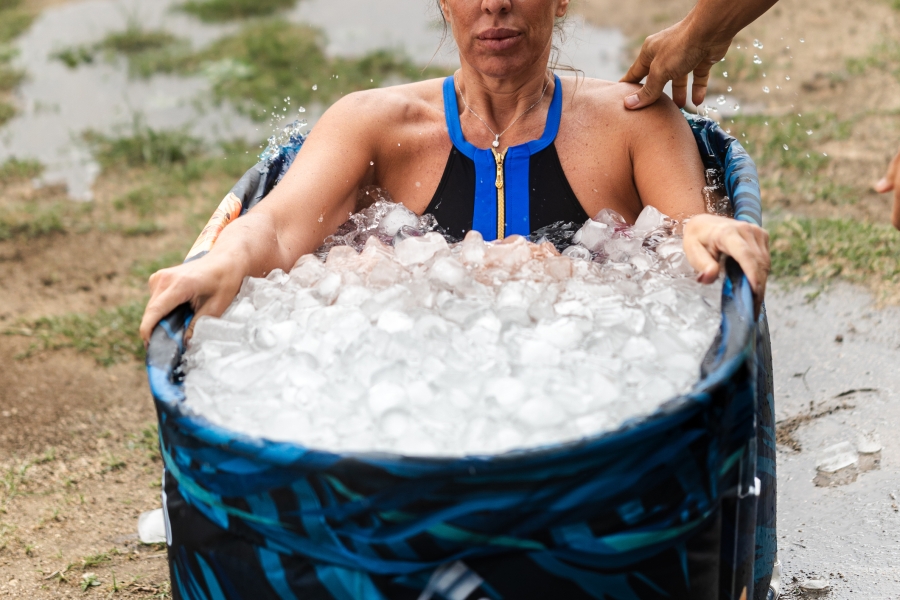Running is a great form of exercise and stress relief for many people. But, it can take a toll on your knees. Most knee injuries in runners are the result of overuse, changes in your running routine, or wear and tear.
When patients come see me with a knee injury, they often have the same concerns:
- Can I keep running?
- What can I do to strengthen my knees?
- How can I prevent this from happening again?
Learn about the different types of knee injuries and what you can do to keep going the distance.
Jump to:
- What Is Runner's Knee?
- What Is Iliotibial Band Syndrome?
- What Is Jumper's Knee?
- What Are Other Knee Injuries Runners Have?
What Is Runner's Knee?
Runner's knee – also known as patellofemoral pain syndrome – is an overuse injury that affects as many as 30% of female runners and 25% of male runners. That makes it the most common running-related injury.
In runner's knee, the cartilage in your kneecap gets irritated. This causes pain while you're running, squatting, bending or even sitting for awhile. I often see patients come in with runner's knee after they start running at an incline or increase miles or speed.
How to Treat Runner's Knee at Home
The telltale sign of runner's knee is mild to moderate pain around or behind your kneecap. When this happens:
- Take a break from running.
- Elevate and ice your knee to relieve pain.
- Try a low-impact activity such as swimming to stay active.
Additional Treatment for Runner's Knee
It may also be a good idea to take part in a strengthening and motor retraining program, or physical therapy and exercises to fortify your knees as well as other parts of your body. Orthotics, taping, and manual therapy such as massage, myofascial release and trigger point therapy may also help.
What Is Iliotibial Band Syndrome?
Iliotibial band (IT band) syndrome is a common overuse injury, affecting as many as 12% of runners. It happens when the tendon from your hip to outer knee tightens and irritates your outer knee area, causing pain.
Like runner's knee, IT band syndrome often happens when you've increased the miles you run.
How to Treat Iliotibial Band Syndrome at Home
Again, it's important to stop running and let your body rest:
- Ice your knee to help with pain.
- Take an over-the-counter anti-inflammatory medication such as aspirin, ibuprofen or naproxen to reduce pain.
- Try swimming or another low-impact exercise.
Additional Treatment for Iliotibial Band Syndrome
It may be a good idea to have an analysis of your running stance, technique and footwear at this point. Having an expert evaluate and tweak your technique can help tremendously.
A strengthening program, physical therapy and exercises, and manual therapy such as trigger point work can help, too.
What Is Jumper's Knee?
Jumper's knee – also called patellar tendonitis – is an overuse injury that occurs when a tendon is overloaded, causing it to thicken. I see this most often in younger patients who complain about pain in the front of the knee.
It can be especially painful when you squat, jump or land. Jumper's knee typically begins in adolescence or early adulthood.
How to Treat Jumper's Knee at Home
There are a few things that you can do yourself to relieve the pain from this injury:
- Take a break from running until your pain subsides.
- Ice the affected area to help with pain.
- Choose a low-impact activity until your knee pain is gone.
Additional Treatment for Jumper's Knee
A sports medicine or orthopaedic specialist can help young athletes by evaluating running mechanics and prescribing strengthening exercises to help avoid re-injury.
Other therapies include massage, extracorporeal shockwave therapy and infrapatellar strapping (a bracing device).
What Are Other Knee Injuries Runners Have?
Athletes can also have injuries to the anterior cruciate ligament (ACL), posterior cruciate ligament (PCL), collateral ligament, meniscus, cartilage and tendons. While these aren't as common in runners, they're still serious and require medical attention.
Knee injuries range from minor to serious, so it's important to take a break from running and see your healthcare provider if pain persists.
Schedule an Appointment
Our team can examine your running-related knee problem and recommend next steps. Request an appointment online with a Temple sports medicine or orthopaedic specialist, or call 800-TEMPLE-MED (800-836-7536).
